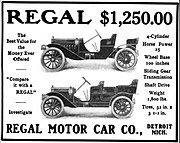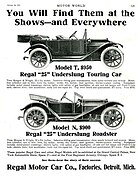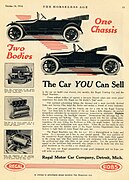
The REO Motor Car Company was a company based in Lansing, Michigan, which produced automobiles and trucks from 1905 to 1975. At one point, the company also manufactured buses on its truck platforms.

The Winton Motor Carriage Company was a pioneer United States automobile manufacturer based in Cleveland, Ohio. Winton was one of the first American companies to sell a motor car. In 1912 Winton became one of the first American manufacturers of diesel engines.

Studebaker was an American wagon and automobile manufacturer based in South Bend, Indiana, with a building at 1600 Broadway, Times Square, Midtown Manhattan, New York City. Founded in 1852 and incorporated in 1868 as the Studebaker Brothers Manufacturing Company, the firm was originally a coachbuilder, manufacturing wagons, buggies, carriages and harnesses.
The Aerocar is an American automobile that was built from 1906 until 1908 in Detroit, Michigan. Backed by Henry Ford's former partner, coal merchant Alexander Malcomson, the short-lived company offered an air-cooled four-cylinder luxury car which sold for $2,800.
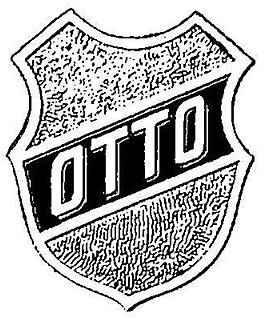
Otto and Ottomobile were brass era automobile marques of the Otto Gas Engine Works of Philadelphia, Pennsylvania from 1910 to 1912.

The Lozier Motor Company was a brass era producer of luxury automobiles in the United States. The company produced automobiles from 1900 to 1918, in Plattsburgh, New York and from 1910, at Detroit, Michigan.

The Premier Motor Manufacturing Company built the brass era and vintage Premier luxury automobile in Indianapolis, Indiana, from 1903 to 1925.

The Marion was an automobile produced by the Marion Motor Car Company in Indianapolis, Indiana from 1904 to 1915.
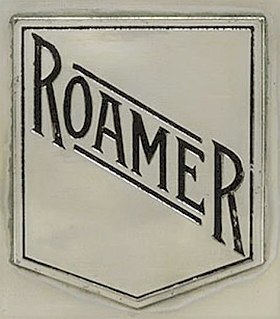
Barley Motor Car Co. was a manufacturer of luxury automobiles in Kalamazoo, Michigan, and Streator, Illinois. It manufactured the Roamer automobile (1916–29) and briefly, the Barley (1922–24), and the Pennant (1924–25).

The Pungs-Finch was an American automobile manufactured in Detroit, Michigan from 1904 to 1910. They were powerful touring cars built by a factory which primarily made marine gas engines.

Nyberg was the name of a brass era American automobile built by Henry Nyberg of Chicago, Illinois, in Anderson, Indiana, and Chattanooga, Tennessee from 1911 to 1914.

The Matheson was a luxury American automobile manufactured from 1903 to 1912, first in Grand Rapids, Michigan, then Holyoke, Massachusetts and from 1906 in a purpose-built factory in Forty Fort, Wilkes-Barre, Pennsylvania.

The Metz Company was a pioneer brass era automobile maker established by Charles Herman Metz in Waltham, Massachusetts, from 1909 to 1922.
There were three automobiles called Pilot in the brass car and vintage car eras. An American Pilot was built from 1909 to 1924 in Richmond, Indiana. A British Pilot was built from 1909 to 1914 in London, England and a German Pilot built from 1923 to 1925 in Werdau, Saxony.
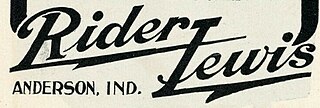
Rider-Lewis was a brass era automobile built first in Muncie and then Anderson, Indiana from 1908 to 1911.

Mitchell was a major brass era automobile marque in Racine, Wisconsin from 1903 to 1923.

The W. H. Kiblinger Company and the W. H. McIntyre Company produced Brass Era automobiles in Auburn, Indiana from 1907 to 1915.
The Pierce Engine Company of Racine, Wisconsin, was the manufacturer of the brass era Pierce-Racine automobile. The company was founded in 1892 and produced automobiles from 1904 to 1910.

The Clydesdale Motor Truck Company was a motor company that existed from 1917 to 1939 with headquarters in Clyde, Ohio. Initially, they made military trucks for World War I. Military contracts continued to be a large part of their business after the war, but they also sold into many other markets: general haulage, farming, and specialized vehicles such as fire trucks. They survived the Wall Street Crash of 1929 and the Great Depression, but increasingly struggling, they were wound up in 1939.
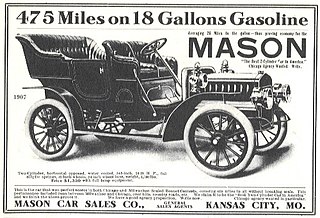
The Mason was a Brass Era automobile manufactured in Des Moines, Iowa from 1906 to 1909 and Waterloo, Iowa from 1911 to 1914. In 1909 and 1910 it was marketed as the Maytag-Mason.




